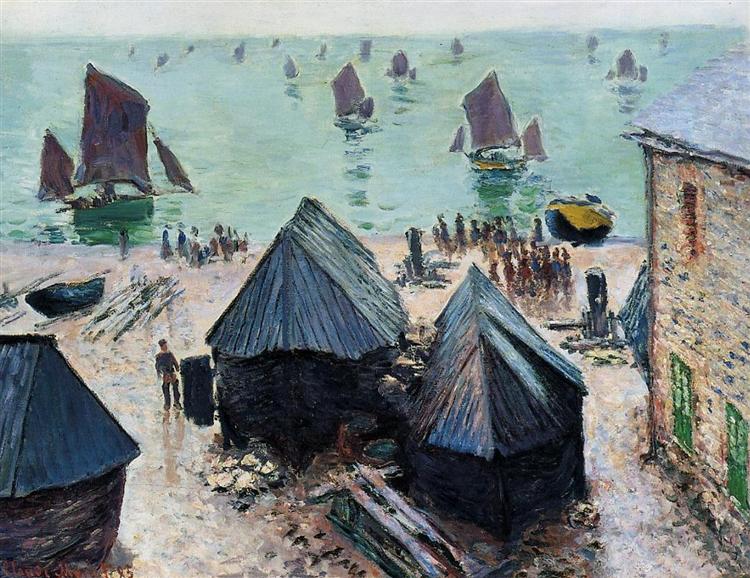Description
The work "The exit of the ships - Etretat" (1885) by Claude Monet is erected as a magnificent representation of the impressionist approach that dominated the career of this master of light and color. The painting captures a fleeting moment in the life of the port of Étretat, in Normandy, evidencing the mastery of Monet to combine natural light with the dynamics of human activity. With its characteristic use of the brush, a vibrant atmosphere is generated that evokes the feeling of movement and immediacy of the moment, fundamental characteristics of impressionism.
Visually, the work adds to the series of marine landscapes where Monet found a deep connection with nature. The composition is organized around a series of ships in the water, which seem to be shifted gently to the beat of the waves. The forms of vessels, although schematic, transmit a clear sense of direction and purpose, as if they were in full load or preparing to go out to the maritime adventure. This sense of movement is enhanced by the use of loose and dynamic brushstrokes that Monet masterfully uses.
The color palette is another prominent aspect in this work. Monet adorns the scene with a wide range of blue and green tones, reflecting the various tones of sea water, while the touches of white and gray suggest the foam of the waves when colliding against the ships and the altered surface of the water. There are also warmer tones, such as yellow and orange, which account for the sunlight that is filtered between the clouds, creating a luminous and changing atmosphere that is characteristic of the artist's impressionist period.
As for the human presence in the work, figures that appear on the shore and on the ships can be distinguished, although almost abstract represented. There is no focus on faces or individualities; Rather, these figures seem to be an element of the scene that reinforces the sense of work and the vibrant activity of the port. This representation technique is aligned with the impressionist philosophy of capturing the essence of the moment, above the meticulous details.
The historical context of this painting is equally significant. Monet conducted numerous works in Étretat, a place that attracted many artists at the end of the 19th century due to their natural beauty and unique light. This work, in particular, is part of a stage where Monet was exploring the representation of water in various forms and states, revealing its fascination with changing light and its influence on the landscape.
Finally, "the exit of the ships - Etretat" is a brilliant example of Claude Monet's genius and its ability to transform a simple coastal panorama into a poetic visual experience. This work not only represents a time in time, but also captures the essence of impressionism, a movement that sought to express the subjective perception of reality through light and color. In this context, Monet's work remains a enduring testimony of the ephemeral beauty of nature and human life that interacts with it.
KUADROS ©, a famous paint on your wall.
Hand-made oil painting reproductions, with the quality of professional artists and the distinctive seal of KUADROS ©.
Reproduction service paintings With a guarantee of satisfaction. If you are not completely satisfied with the replica of your painting, we refund your money 100%.

